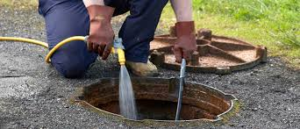Handyman Naperville IL is a skilled professional who works in various fields. He can fix a leaky faucet, hang a picture frame, or even install security systems.
Handypersons are skilled in many different trades, unlike general contractors specializing in one trade. They have the experience and the tools to handle any task.

A Handyman is a skilled professional who can perform a range of home repair and maintenance tasks. They often work as independent contractors, but they can also be employed by service companies or construction firms that offer these services to clients. Regardless of the industry in which they operate, all handypersons should focus on polishing their skills and becoming experts in a few areas. This will allow them to distinguish themselves from their competitors and provide a high-quality service experience to their clients.
Many states have different requirements for licensed handymen. Some require a specific trade license, while others require a general license to work in the field. In either case, it is important to know what the state’s requirements are before you begin applying for your license. This will help you avoid any unnecessary delays or rejections.
Before you start working as a licensed handyman, you need to complete the necessary training and education. There are several options available for this, including apprenticeships and community college courses. Apprenticeships are a great way to learn the skills and techniques needed for the job, while gaining real-world experience. You can also find online resources that can help you prepare for the licensing exam.
Most states have restrictions on the types of jobs that handymen are allowed to do. For example, some services require a trade-specific license, such as plumbing and electrical services. If you’re looking to become a licensed handyman, it’s best to research the requirements in your state before starting your application.
Another qualification for becoming a licensed handyman is having a good reputation in the field. This will help you get more jobs and increase your earnings. You can build your reputation by providing excellent customer service and referring clients to friends and family.
You should also take advantage of social media to promote your business and attract new customers. Use social media to post about your services and answer questions from potential clients. You can also post photos of your work to attract more customers.
Finally, you should have a reliable software solution to manage your business operations. InvoiceOwl allows you to handle estimates, invoicing, and bookkeeping from one centralized platform. This will save you time and money and ensure that your data is always up to date.
Reputation
Handyman is a general term for a person skilled in a wide range of repair and maintenance services. The word is sometimes used to refer to a person who provides these services for both home and office use.
The term handyperson is becoming more common, and it can also be used to describe women who provide similar services. In addition, some firms are specializing in providing professional handyman services for both homes and businesses. These firms are often called professional handyworker companies and claim possible advantages, such as providing insured and licensed technicians.
The notion of the handyman is a popular one in literature and in films. There are songs about the profession by Elvis Presley and Del Shannon, and TV shows featuring femme-fatales who fall for them. Reputation is a major topic of study in social and management sciences, and it applies to a variety of settings, from competitive environments like markets, to cooperative ones such as societies, organizations and firms.
Insurance
Handymen often need multiple types of insurance to cover their unique business risks and exposures. They typically start with general liability, which protects the business against claims related to third-party property damage or bodily injury. In addition, many policies include coverage for tools and equipment that might be stolen or damaged while in use. Those that use their personal vehicles for business purposes may also want to consider commercial auto insurance.
Other insurance types that might be useful for handymen to have include workers’ compensation, which provides financial support in the event a worker is injured on the job. Additionally, some clients or employers may require that a handyman have certain kinds of insurance as a condition of doing work for them.
Choosing the right insurance for your Handyman business depends on the scope of your operations, how much risk you are willing to take and your budget. A good place to start is by assessing your risks and determining the minimum amount of coverage you need to meet those risks. A well-versed independent insurance agent can help you find the right policy for your needs.
Some insurance companies offer a variety of options for Handymen, including bundled packages and discounted rates. Progressive, for example, offers a package that includes general liability, commercial auto, and commercial property insurance. Its customers report high customer service satisfaction, and its competitive pricing has led it to earn an A+ rating from AM Best. Another company that specializes in insurance for small businesses is biBERK, which was founded in 2015 and prioritizes affordability.
Its comprehensive policy offerings and online quotes make it a strong contender among the top options for Handymen looking for insurance. Its bundled options are flexible, and its deductible levels allow you to reduce monthly premiums in exchange for higher out-of-pocket costs in the event of a claim. Customers can also choose to add additional insured contracts to their policies, which allows them to include clients as extra parties in case a claim is made against the company. As a result, the company’s customers receive the maximum protection for their investments and operations.
Licenses
The process of becoming licensed as a Handyman typically includes an application that requires background information and references, as well as the completion of specific courses or accumulating a certain number of hours of hands-on experience. Once this is done, the person must pass a state-sanctioned exam. It is important to take the time to prepare for this exam by studying code books and other recommended resources. Once the person passes the exam, they must submit proof of their score and any other required documentation to their governing body.
There are a few different types of licenses that may be available to Handymen, depending on their state’s requirements. In general, a Handyman can perform basic construction work without a license, but if they want to be licensed for specialized projects such as plumbing, electrical or HVAC work, they will need a contractor’s license. Some states also set limits on the amount of unlicensed work that can be performed. For example, a remodeling job that costs more than $1,000 cannot be broken up into five smaller jobs to avoid the limit.
Most Handymen have on-the-job training that allows them to learn the specific skills and techniques needed for a particular task. This training typically involves shadowing an experienced Handyman until the person feels comfortable performing the tasks alone. Many people also pursue formal education and training, such as classes or certifications, to further develop their skills.
A Handyman must be familiar with the different aspects of construction, including blueprints and schematics. They must be able to read and understand these documents to accurately complete a project on time and within budget. They must also be able to follow all applicable safety regulations to ensure the health and safety of themselves and their customers. Finally, a Handyman must be able to work well with others on a team. This is especially important when it comes to large projects, such as a major kitchen remodel, or when they are working with clients who have different skill sets than themselves. These skills include communication, planning and scheduling.






